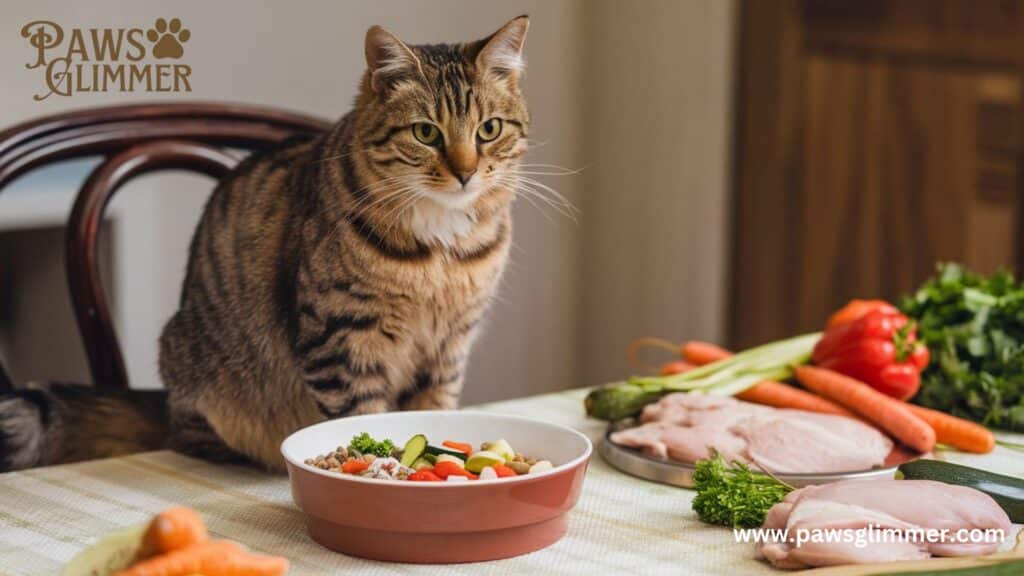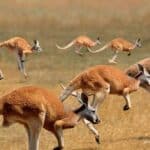As a cat owner, you may wonder how long your feline can endure without essential resources. In situations where cats are left without food or water, it’s crucial to understand their limits and the risks involved. This guide will dive into how long cats can survive in such conditions and the signs to watch for if your pet is dehydrated or malnourished.
Understanding the survival instincts of cats without food or water is important for their health and well-being. This guide will help you know when to take action and how to ensure your cat stays properly nourished and hydrated.
Expand your knowledge with this Post
The Water Imperative: Hydration’s Vital Role
Cats, despite their reputation as low-maintenance pets, have specific hydration needs that are crucial to their health. Evolved from desert-dwelling ancestors, our domestic felines still retain some of their water-conserving traits. However, this doesn’t mean they can go without cat drinks for extended periods.
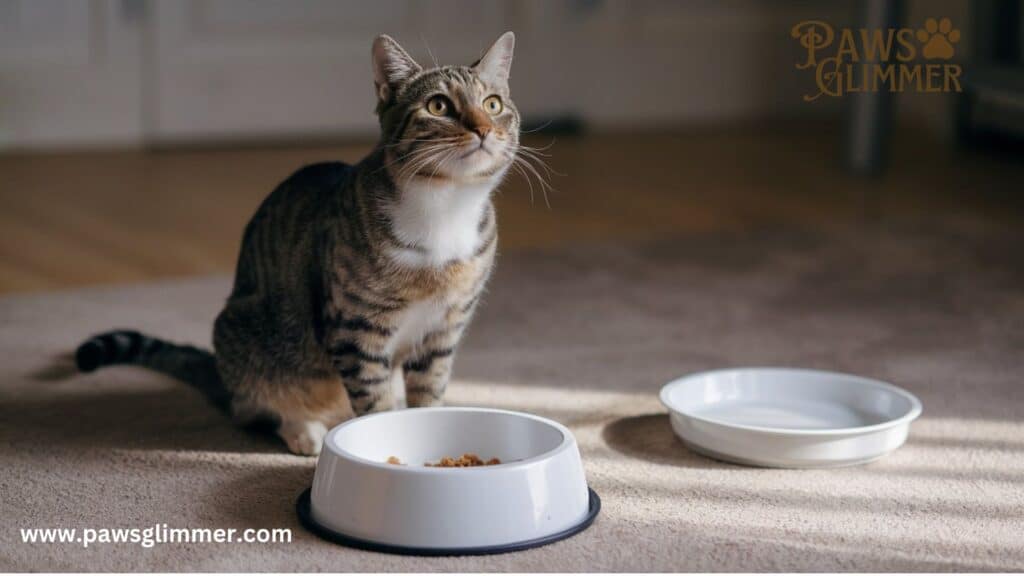
Daily Water Intake Requirements
On average, cats need about 3.5 to 4.5 ounces of water per 5 pounds of body weight daily. This means a 10-pound cat should consume between 7-9 ounces of water each day. But here’s the catch – this includes water from their food as well.
“Proper hydration is the cornerstone of feline health. It affects everything from kidney function to digestion.” – Dr. Sarah Feline, DVM
Here’s a quick reference table for daily water needs based on cat weight:
| Cat Weight (lbs) | Daily Water Requirement (oz) |
|---|---|
| 5 | 3.5 – 4.5 |
| 10 | 7 – 9 |
| 15 | 10.5 – 13.5 |
The Impact of Dehydration
When cats don’t get enough kitty fluids, their bodies can quickly spiral into a state of dehydration. This water shortage affects multiple bodily functions:
- Decreased blood volume
- Electrolyte imbalances
- Impaired nutrient transport
- Reduced waste elimination
This article is also worth reading
Long-term dehydration can lead to serious health issues, including kidney disease and urinary tract problems. That’s why ensuring your cat has constant access to fresh water is crucial for maintaining their cat health.
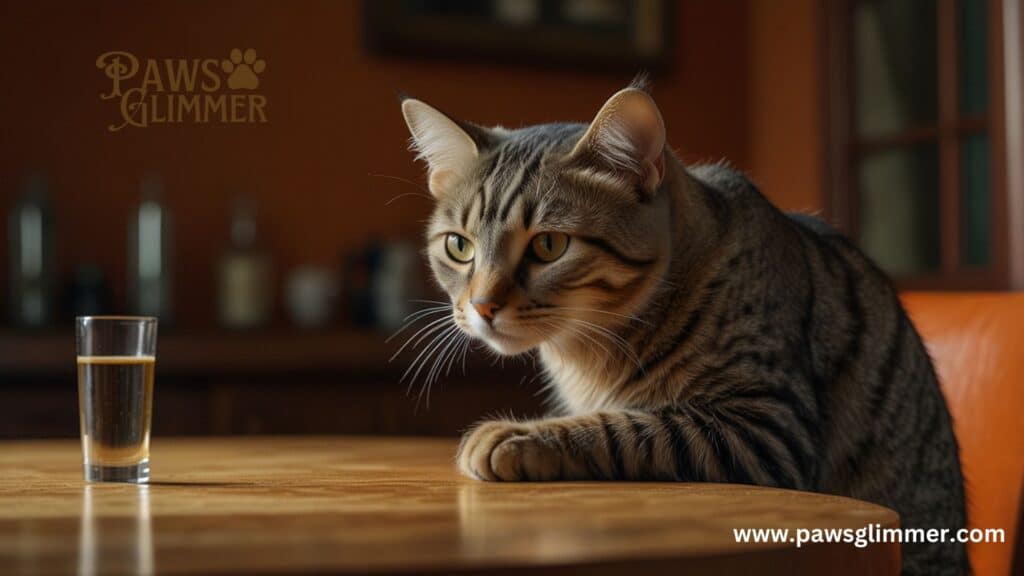
Telltale Signs: Spotting Dehydration in Cats
Recognizing the signs of liquid deprivation in your feline friend is crucial. Here are some key symptoms to watch for:
- Sunken eyes: The eyes may appear dull or sunken into their sockets.
- Dry gums: Healthy gums should be moist and pink. Dry or tacky gums indicate dehydration.
- Skin elasticity: Gently pinch the skin between your cat’s shoulder blades. If it doesn’t snap back quickly, your cat may be dehydrated.
- Lethargy: A dehydrated cat may become unusually tired or uninterested in play.
- Decreased urination: Keep an eye on the litter box. Less frequent urination can be a sign of dehydration.
Thirst Clock: How Long Can Cats Truly Go Without Water?
When it comes to cat survival without water, the clock is ticking much faster than you might think. While cats can go for several weeks without food (though this is not recommended), their tolerance for water shortage is much lower.
A healthy cat can typically survive for 3-4 days without water. However, this doesn’t mean it’s safe to let your cat go this long without hydration. After just 24 hours without water, cats can begin to experience serious health consequences.
Factors influencing a cat’s ability to withstand fluid absence include:
- Age: Kittens and senior cats are more vulnerable to dehydration
- Size: Smaller cats dehydrate faster than larger ones
- Diet: Cats on dry food diets need more supplemental water
- Environment: Hot or humid conditions increase water needs
- Health status: Cats with certain health conditions may dehydrate more quickly
The Fasting Feline: Cats and Food Deprivation
While cats are more resilient when it comes to food deprivation, going without cat chow for extended periods can still be dangerous. Here’s what you need to know about feline fasting:
Normal vs. Concerning Periods Without Eating
It’s not unusual for cats to skip a meal occasionally. However, any hunger period lasting more than 24 hours should raise concern. Here’s a general timeline:
- 12-24 hours: Generally safe, but monitor closely
- 24-48 hours: Cause for concern, consider contacting your vet
- 48+ hours: Urgent situation, veterinary care needed
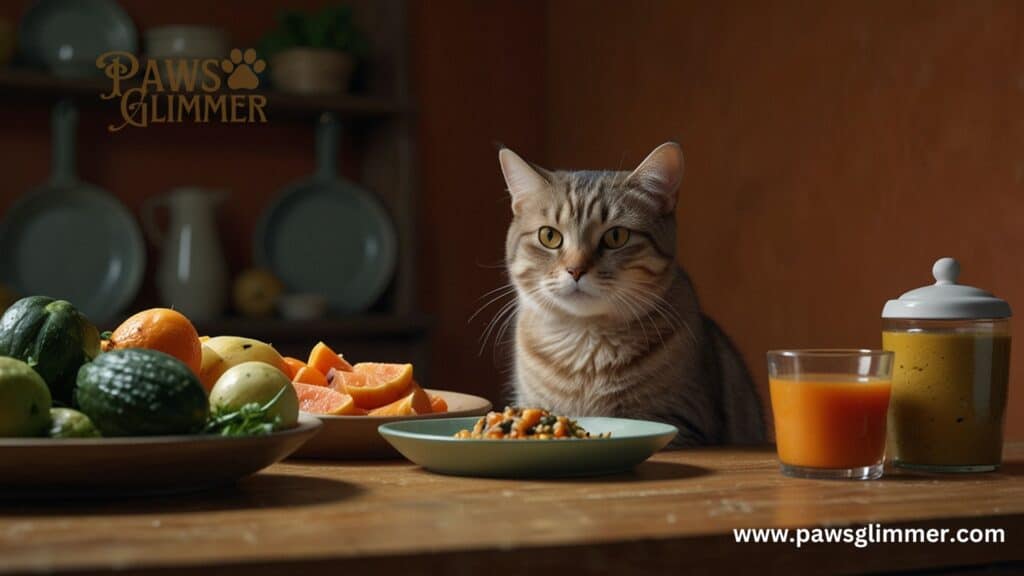
Health Risks of Prolonged Fasting
Extended periods without kitty kibble can lead to several health issues:
- Hepatic lipidosis: Also known as fatty liver disease, this condition can develop when cats go without food for as little as 2-3 days.
- Muscle wasting: The body begins to break down muscle tissue for energy.
- Weakened immune system: Prolonged nutritional absence can compromise your cat’s ability to fight off infections.
- Gastrointestinal issues: Prolonged fasting can lead to digestive turmoil when eating resumes.
Hunger Strike: Why Cats Might Refuse Food or Water
Understanding why your cat might be turning their nose up at their kitty cuisine or cat beverage is crucial. Here are some common reasons:
Connect the dots with this article
Medical Causes
- Dental issues: Tooth pain can make eating uncomfortable
- Gastrointestinal problems: Nausea or stomach upset can reduce appetite
- Respiratory conditions: Breathing difficulties can affect a cat’s sense of smell, reducing interest in food
Psychological Factors
- Stress from changes in routine or environment
- Anxiety due to new pets or family members
- Depression, often linked to loss or major life changes
Environmental Influences
- New food that doesn’t appeal to their taste
- Dirty food or water bowls
- Unfavorable feeding environment (e.g., noisy or high-traffic areas)
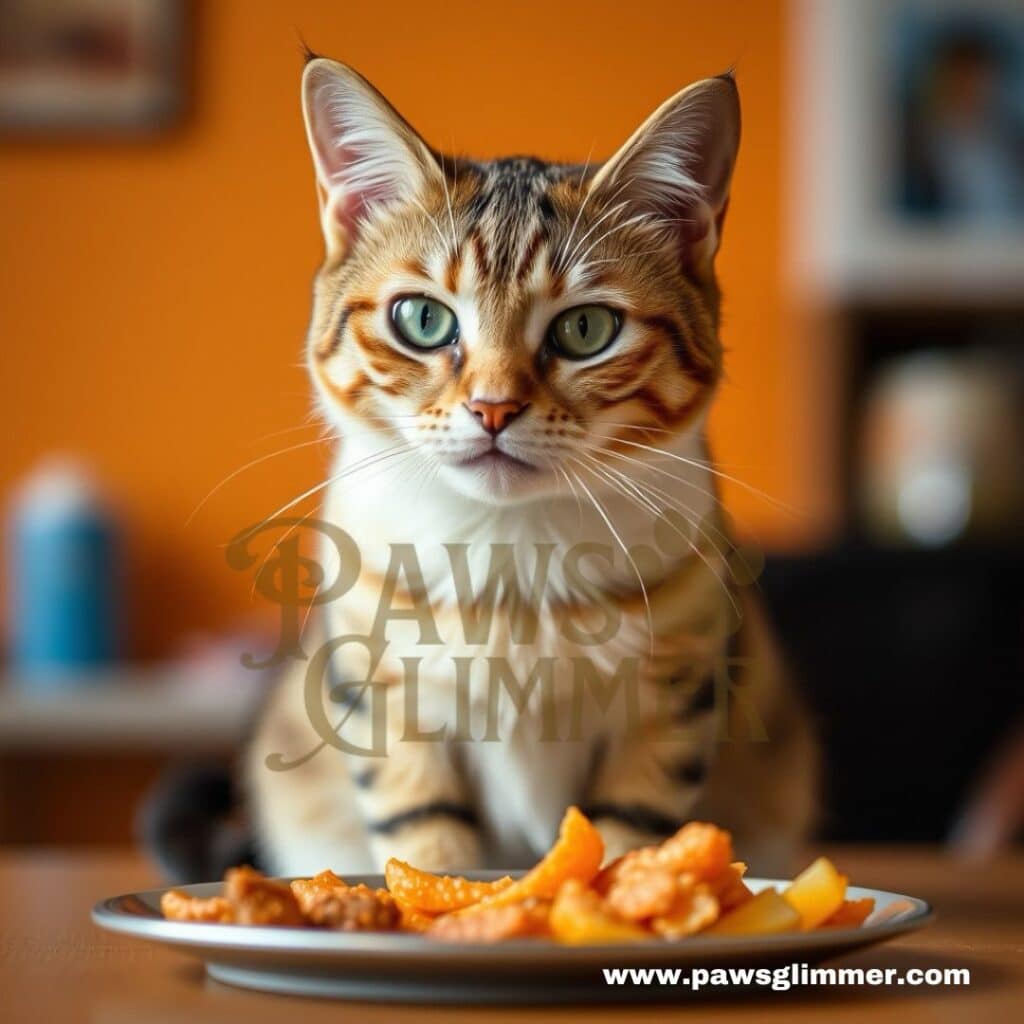
Case Study: Whiskers’ Water Woes
Meet Whiskers, a 7-year-old domestic shorthair who suddenly stopped drinking water. His owner, Jane, noticed Whiskers’ water bowl remained full for two days. Concerned, she took him to the pet hospital.
The animal doctor discovered Whiskers had developed a urinary tract infection, making urination painful. This discomfort had caused him to associate his water bowl with pain, leading to avoidance.
Treatment included:
- Antibiotics for the infection
- Pain management
- Encouraging water intake through wet food and a cat water fountain
Within a week, Whiskers was back to his normal drinking habits, highlighting the importance of prompt feline medical attention when changes in water consumption occur.
Encouraging Consumption: Practical Strategies
Ensuring your cat maintains proper feline hydration and nutrition is key to their overall feline wellness. Here are some strategies to boost your cat’s eating desire and thirst:
Water Enticement Techniques
- Invest in a cat water fountain: Many cats prefer running water.
- Try flavored waters: Add a small amount of low-sodium chicken broth to their water.
- Use ice cubes: Some cats enjoy playing with and licking ice cubes.
- Increase wet food in their diet: Wet food can provide up to 80% of a cat’s daily water needs.
Food Motivation Methods
- Warm up their food: Heating food slightly can enhance its aroma and appeal.
- Offer variety: Rotate between different flavors and textures of cat chow.
- Try hand-feeding: This can encourage eating and strengthen your bond.
- Use food puzzles: These can make mealtime more engaging and stimulating.
The Picky Eater Predicament
Some cats are notoriously finicky eaters. Understanding the reasons behind this pickiness can help you address eating issues more effectively.
Natural Feline Food Preferences
Cats are obligate carnivores, meaning their bodies are designed to derive nutrition primarily from animal-based proteins. In the wild, they would eat multiple small meals throughout the day, consisting mainly of prey animals.
This natural preference can explain why some cats turn their nose up at certain types of pet meals. They may be instinctively seeking out foods that more closely resemble their natural diet.
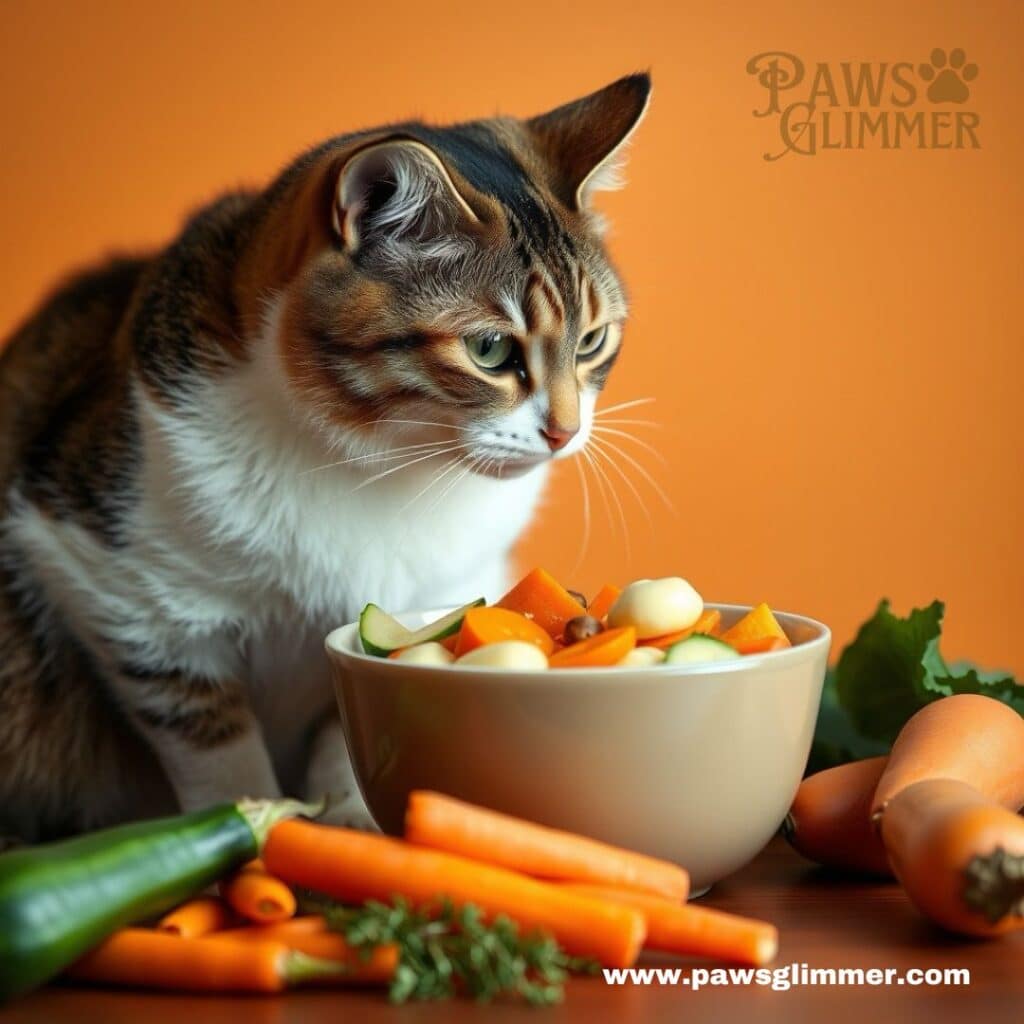
Addressing Food Sensitivities and Allergies
Just like humans, cats can develop food sensitivities or allergies. Common signs of dietary intolerances include:
- Vomiting or diarrhea
- Skin irritation or excessive grooming
- Ear infections
- Chronic gas
If you suspect your cat has food allergies, consult with your veterinarian. They may recommend an elimination diet to identify the problematic ingredient.
The Impact of Whisker Fatigue
Believe it or not, a cat’s sensitive whiskers can affect their eating habits. “Whisker fatigue” occurs when a cat’s whiskers repeatedly brush against the sides of a deep or narrow food bowl, causing discomfort.
To address this:
- Use wide, shallow food bowls
- Consider a flat plate for feeding
- Ensure the bowl is always filled to the brim to minimize whisker contact
When to Worry: Red Flags for Veterinary Intervention
While it’s normal for cats to have the occasional off day, certain signs should prompt immediate feline medical attention:
- Not eating for more than 24 hours
- No water intake for 24 hours
- Lethargy combined with appetite loss
- Visible weight loss
- Vomiting or diarrhea lasting more than 24 hours
- Yellowing of the gums or eyes (a sign of hepatic lipidosis)
Remember, early intervention is key in maintaining your cat’s feline fitness. Don’t hesitate to contact your cat clinic if you’re concerned about your pet’s eating or drinking habits.
Prevention: Setting Up a Cat-Friendly Feeding Environment
Creating the right eating atmosphere can significantly impact your cat’s willingness to eat and drink. Here are some tips for optimizing your cat’s meal space:
- Choose the right location: Place food and water bowls in a quiet, low-traffic area.
- Separate resources: Keep food, water, and litter boxes in different areas.
- Provide multiple stations: In multi-cat households, have several feeding and drinking stations to reduce competition.
- Clean regularly: Wash food and water bowls daily to maintain hygiene.
- Consider elevated feeding: Some cats prefer their food and water bowls slightly raised off the ground.
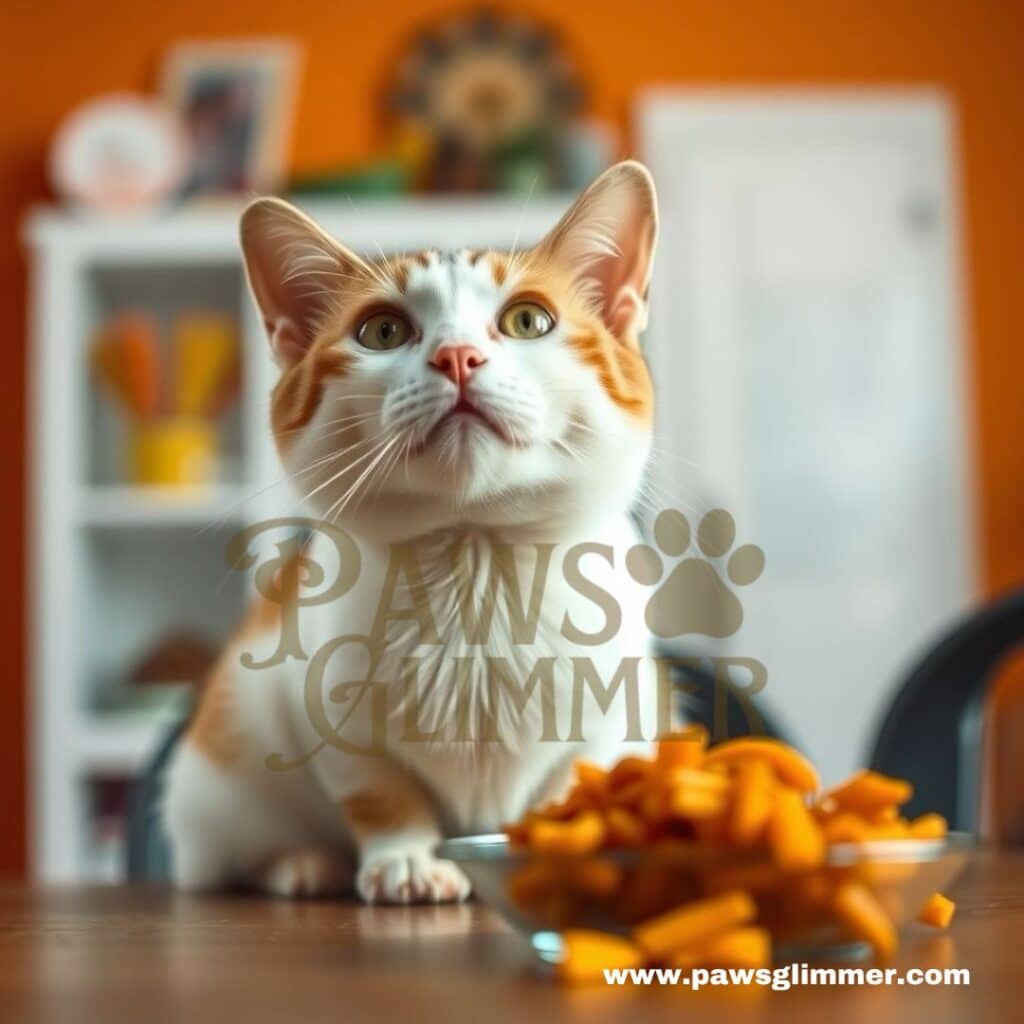
Special Considerations
Cats with Chronic Health Conditions
Cats with ongoing health issues may have different nutritional and hydration needs. For example:
- Diabetic cats may need carefully timed meals to coincide with insulin injections.
- Cats with kidney disease often benefit from increased water intake and special diets.
- Cats with hyperthyroidism may have increased appetite but still lose weight.
Always consult with your veterinarian to develop a feeding plan tailored to your cat’s specific health needs.
Outdoor Cats and Varying Nutritional Needs
Outdoor cats may have different nutritional requirements due to their higher activity levels. They may also be more prone to picking up parasites or consuming prey, which can affect their appetite for their regular cat food.
If you have an outdoor cat:
- Ensure they’re up to date on parasite prevention
- Provide high-quality, energy-dense food
- Monitor their weight and adjust food portions as needed
Preparing for Emergencies: Creating a Cat Disaster Kit
In case of emergencies, it’s crucial to have supplies ready for your cat. Your cat disaster kit should include:
- At least a week’s worth of your cat’s regular food (rotate regularly to keep it fresh)
- Bottled water (1 gallon per cat per day for at least 5 days)
- Portable food and water bowls
- Any necessary medications
- Copies of medical records
- A recent photo of your cat for identification purposes
Conclusion: Balancing Feline Independence with Responsible Care
Cats are known for their independence, but when it comes to food and water, they rely on us more than we might think. Understanding your cat’s nutritional and hydration needs is crucial for maintaining their feline stamina and overall well-being.
Remember:
- Water is critical: Cats can only go a few days without water before facing serious health consequences.
- Food deprivation is dangerous: While cats can technically survive longer without food, going more than a day without eating can lead to health issues.
- Monitor closely: Keep an eye on your cat’s eating and drinking habits, and don’t hesitate to seek veterinary care if you notice changes.
- Create an inviting environment: Make sure your cat’s feeding environment is comfortable and stress-free.
By staying attentive to your cat’s needs and providing the right care, you can ensure your feline friend maintains optimal cat health and enjoys a long, happy life by your side.

Raymond Dandan is a seasoned pet blogger with a passion for feline care and behavior. With years of experience and a deep love for cats, Raymond brings expert insights and practical tips to “PawsGlimmer.” His engaging writing and thorough research help cat owners provide the best for their furry friends, making him a trusted voice in the pet community.

